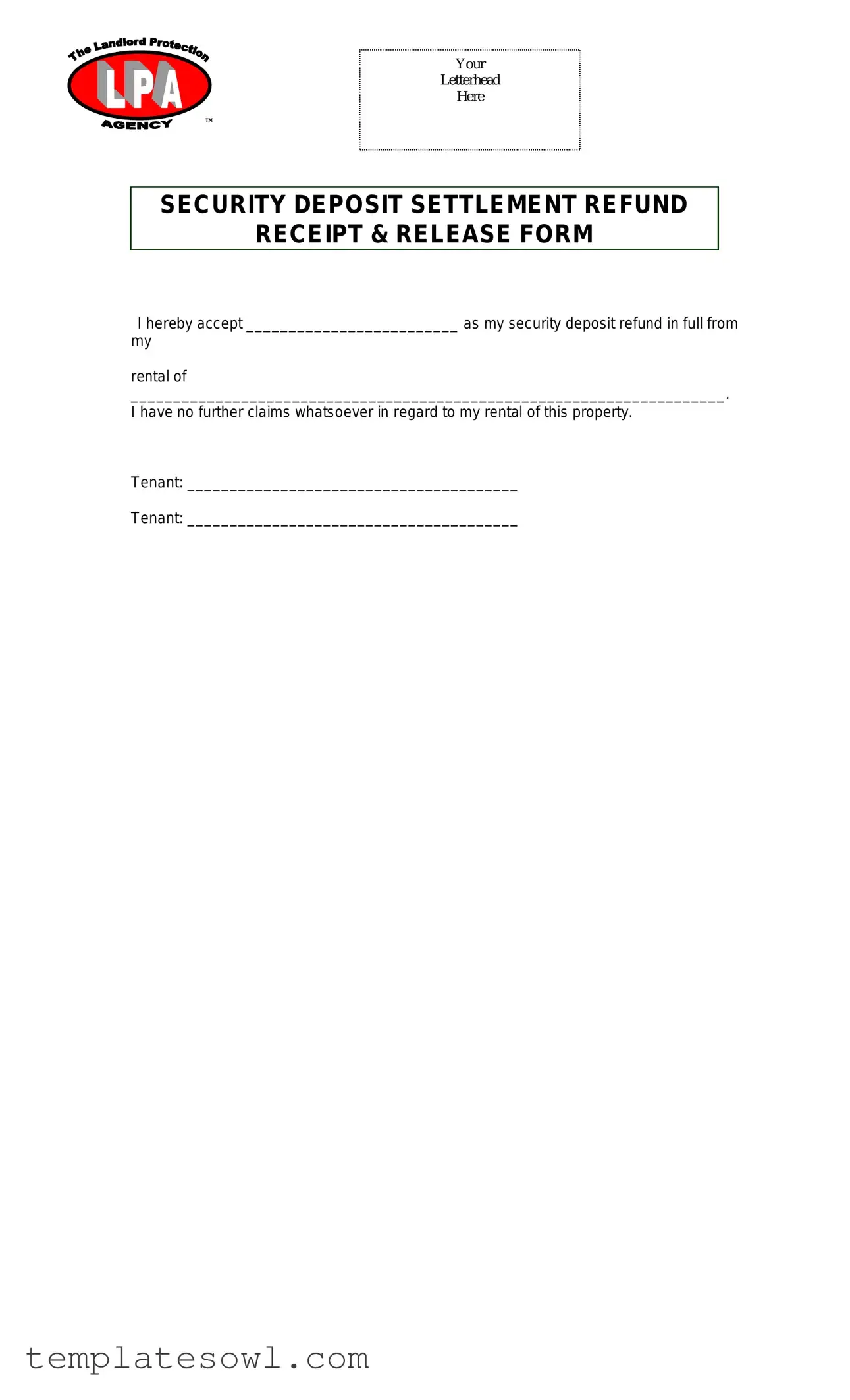What is the purpose of the Deposit Refund Receipt form?
The Deposit Refund Receipt form serves as a written acknowledgment that a tenant has received their security deposit back from a landlord. It protects both parties by documenting the transaction and ensuring that the tenant has no further claims related to the rental property.
Who should complete the Deposit Refund Receipt form?
This form should be completed by the tenant receiving the security deposit refund. It is essential for the landlord to provide this form to the tenant to finalize the return of the deposit and to clarify that the tenant has no additional claims against the rental property.
What information needs to be included on the form?
The form requires the tenant to fill in the amount received as a security deposit refund. Furthermore, the tenant must specify the property rental address. The signatures of all tenants who were part of the rental agreement are also necessary to make the receipt valid.
Is the Deposit Refund Receipt legally binding?
Yes, the receipt is a legal document. By signing it, the tenant confirms receipt of the security deposit and agrees that they have no further claims against the landlord or the property regarding that rental agreement.
What happens if the tenant does not receive the full security deposit amount?
If a tenant does not receive the full amount of their security deposit, they should address this issue with the landlord before signing the Deposit Refund Receipt. Signing the receipt indicates acceptance of the amount stated. Therefore, it is crucial for tenants to resolve any disputes regarding the refund amount prior to completing the form.
Can tenants still file claims after signing the form?
Generally, signing the Deposit Refund Receipt form means tenants waive their right to make any further claims related to their rental. However, there may be exceptions based on specific circumstances, such as illegal deductions or failure to comply with local laws. Consulting with a legal expert may be advisable in such cases.
What if multiple tenants were involved in the rental agreement?
In cases with multiple tenants, all parties should sign the Deposit Refund Receipt to indicate their agreement and acknowledgment of the refund. This ensures clarity and prevents future disputes over the security deposit among co-tenants.
Where should the completed Deposit Refund Receipt form be stored?
Both the tenant and the landlord should keep a copy of the completed Deposit Refund Receipt form for their records. This ensures that both parties have proof of the transaction and any agreed-upon terms regarding the security deposit refund.

